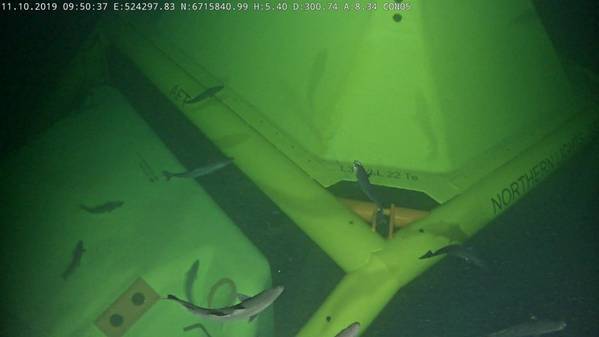
Microsoft has signed an agreement with the Norwegian oil and gas giant Equinor to explore ways to support the Northern Lights carbon capture and storage (CCS) project which will store CO2 2,600 meters below the seabed offshore Norway.
Microsoft, which joins as a technology partner, will explore using the project to enable the transportation and storage of captured CO2. Equinor is developing the project together with Shell and Total as equal partners.
The three oil firms in May made a conditional investment decision on the Northern Lights CO2 transport and storage project in May 2020. Pending approval by regulatory authorities, the project partners will form a joint venture.
It will be responsible for creating an open-source, ship-based carbon transport and storage network including developing business models to store captured CO2 from across Europe. The final investment decision is subject to the Norwegian parliament’s approval, anticipated late 2020. The plan is to start operations in the first half of 2024.
“Carbon capture and storage is a proven technology and has the potential to play a key role in decarbonizing energy and industries across sectors to meet international climate targets,” said Equinor Executive Vice President Irene Rummelhoff. “We look forward to working together with Microsoft and the Northern Lights partners to develop digital technologies for Northern Lights. We are also happy to partner with Microsoft to explore opportunities for the Northern Light project to remove carbon from Microsoft’s operations.”
“One of the world’s imperatives is the need to develop new ways to capture, transport, and permanently store carbon. This will require enormous investment and innovation, including a huge amount of computing power and data,” said Brad Smith, president of Microsoft. "As a company, Microsoft is excited about and committed to supporting promising carbon capture approaches. Our goal is not only to contribute our technology and know-how, but explore how new solutions like the Northern Lights project can help us meet our own carbon-negative goals by 2030.”
 Northern Lights Illustration - Credit: Artbox - Copyright: Equinor Microsoft will explore the use of Northern Lights' CO2 transport and storage facility as part of Microsoft’s portfolio of carbon capture, transportation, and storage projects.
Northern Lights Illustration - Credit: Artbox - Copyright: Equinor Microsoft will explore the use of Northern Lights' CO2 transport and storage facility as part of Microsoft’s portfolio of carbon capture, transportation, and storage projects.
“Together with the other Northern Lights partners, we will explore how this carbon capture and storage project can help potential future customers to mitigate emissions caused by their own energy use. This relationship will make decarbonization solutions including carbon capture and storage technology available to increasing numbers of customers,” says Syrie Crouch, Vice President for CCUS in Shell.
So far, MoUs have been signed with eight European entities representing different industries, including Air Liquide, Arcelor Mittal, Ervia, Fortum Oyj, HeidelbergCement AG, Preem, Stockholm Exergi and ETH Zürich. As part of the MoUs, the parties are looking at solutions for CO₂ delivery, transport and storage of CO2, including logistics, CO2 specifications and roadmap towards potential start of operations.,
Longship
The Northern Lights project is part of the Norwegian full-scale carbon capture and storage (CCS) project “Langskip (Longship),” supported by the Norwegian government.
The project will initially include the capture of CO2 from Norwegian industrial capture sources. The Northern Lights project comprises transportation, receipt, and permanent storage of CO₂ in a reservoir in the northern North Sea.
Initially, Northern Lights includes the capacity to transport, inject and store up to 1.5 million tonnes of CO2 per year. Once the CO2 is captured onshore, it will be transported by ships, injected, and permanently stored 2,600 meters below the seabed of the North Sea.
The facilities are scheduled to be operational in 2024. The CO2 receiving terminal will be located at the premises of Naturgassparken industrial area in the municipality of Øygarden in Western Norway.
The plant will be operated from Equinor’s facilities at the Sture terminal in Øygarden. Exploitation licence EL001 "Aurora" was awarded in January 2019. The geological storage complex is located 2,600 meters below the seabed. In March 2020 the Eos confirmation well was successfully drilled completed.



